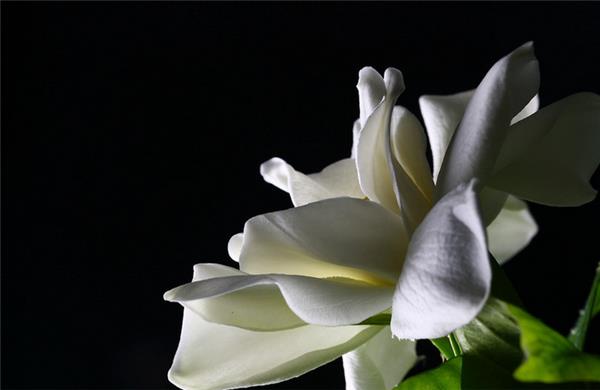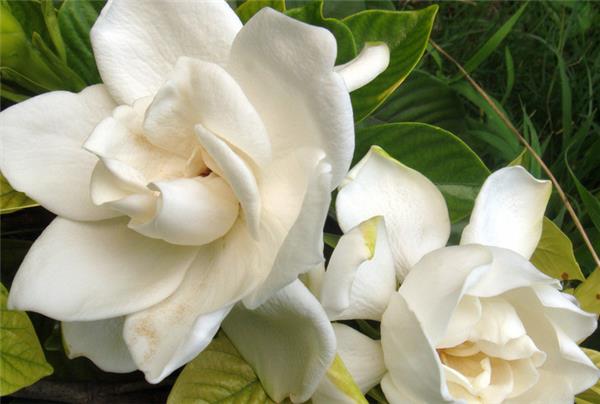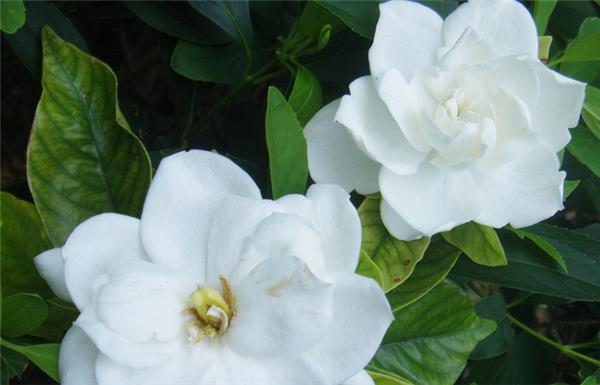[gardenia florescence] flowering maintenance of Gardenia jasminoides
In life, the existence of gardenia can be seen everywhere, whenever flowering, you can smell the long fragrance, and in many parks, communities, gardenia is a very important garden ornamental plant. And gardenia is also very easy to breed, but also has indomitable vitality. When will gardenia blossom in the end? What about its flowering maintenance? Now let's take you to answer these questions.

I. flowering maintenance of Gardenia jasminoides
1. Like the shady environment: do not let the scorching sun expose it, but some people will mistakenly think that gardenia belongs to the whole shade plant, so as to cause food in culture. in fact, we have to maintain 60% light throughout the day when we pay attention to cultivate its shady environment, so as to better meet its growth needs.
2. Like to be moist: when the humidity in the air is less than 70%, it will directly affect the differentiation of flower buds and the growth of flower buds, but too much humidity can also easily cause root rot and withered branches and leaf yellow shedding. In addition to the normal watering, we also often use clear water to spray its foliage and the nearby ground, which can appropriately increase the humidity in the air.
3. Like fertilizer: although gardenia likes fertilizer, it needs acidic fertilizer after fermentation and ripening, and it must be the principle of applying more thin fertilizer. You must avoid thick fertilizer and raw fertilizer, and you can't apply fertilizer when it is in hibernation.
4. Favorite temperature: during the growing period, the most suitable temperature is between 18 and 22 degrees, while the temperature that needs to overwintering is between 5 and 10 degrees. If the temperature is below minus 10 degrees, it is easy to suffer frost damage.

II. Matters needing attention of gardenia flower
The main results are as follows: 1. Gardenia likes sour soil: the content of soil, water and fertilizer makes the plant unable to absorb iron, which affects the formation of chlorophyll, withering branches, scorching leaves, and even death. To use fertile, loose, well-drained acid soil, such as pine sawdust thoroughly mixed into the soil, the use effect is also very good.
2. Gardenia likes shade: avoid the scorching sun, but some people often mistakenly think that gardenia requires full shade, resulting in mistakes in cultivation. In fact, while paying attention to cultivating its shady environment, it is necessary to maintain 60% light throughout the day in order to meet its growth needs.
3. Gardenia likes to be wet: if the air humidity is less than 70%, it will directly affect flower bud differentiation and bud growth, but excessive humidity will cause root rot, branch withering and leaf yellow shedding. In addition to normal watering, foliar and nearby ground should be sprayed with clean water frequently to increase air humidity appropriately.
4. Gardenia like fertilizer: it is appropriate to apply fermented bean cake, sesame sauce residue, peanut bran and other fertilizers, which can be acidic after fermentation, but must be applied with thin fertilizer, avoid thick fertilizer and raw fertilizer, and do not apply fertilizer during hibernation. If you have been planting for less than three years, do not give human faeces and urine. Too much nitrogen fertilizer will result in thick branches, large leaves, thick green, but no flowering. Lack of phosphorus and potassium fertilizer will also appear the phenomenon of non-flowering or bud withering and shedding.

III. Propagation methods of Gardenia jasminoides
It is mainly propagated by the method of cutting and pressing, and the method of sowing and dividing can be used to propagate.
(1) cuttage propagation
The north is in the greenhouse from October to November, and the south can be inserted from April to the Beginning of Autumn at any time, but the survival rate is the highest between summer and autumn. Cuttings select healthy 2-year-old branches with a length of 10 ℃ and 12 cm, cut off the lower leaves, dip them in vitamin B12 injection, and then insert them in sand. Under 80% relative humidity and 20: 24 min, about 15 days can take root. It is better to soak in indole butyric acid of-6 power of 20-10 to-6 power of 50-10 for 24 hours. When the rooting seedlings begin to grow, they can be transplanted or put on the pot for a single plant, and can blossom after 2 years.
(2) striping propagation
In April, strong branches were selected from 3-year-old mother plants, which were 25 to 30 meters long for striping. If there were trigeminal branches, three seedlings could be obtained at the fork at one time. Generally, it can take root after 20-30 days, can be separated from the mother plant in June, and can be planted separately or single plant in the next spring.
(3) sowing and propagation
Most of them are carried out in spring, and the seeds germinate slowly, germinate about 1 year after sowing and blossom after 3-4 years, but it is not easy to receive seeds in the northern pot.

After the above introduction, we can clearly know that the flowering time of Gardenia is from May to June every year, during which time we still need to take good care of him. Let its fragrance stay with us all the time.
In the meantime, we still need to take good care of him. Let its fragrance stay with us all the time.
Related
- Wuhan Hospital Iron Tree Blooming Result Was Instantly Frightened by the Gardener Master
- Which variety of camellia is the most fragrant and best? Which one do you like best?
- What is the small blue coat, the breeding methods and matters needing attention of the succulent plant
- Dormancy time and maintenance management of succulent plants during dormancy
- Minas succulent how to raise, Minas succulent plant pictures
- What are the varieties of winter succulent plants
- How to raise succulent plants in twelve rolls? let's take a look at some experience of breeding twelve rolls.
- Attention should be paid to water control for succulent plants during dormant period (winter and summer)
- Watering experience of twelve rolls of succulent plants
- Techniques for fertilizing succulent plants. An article will let you know how to fertilize succulent plants.



